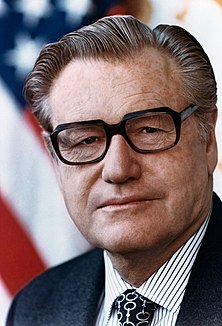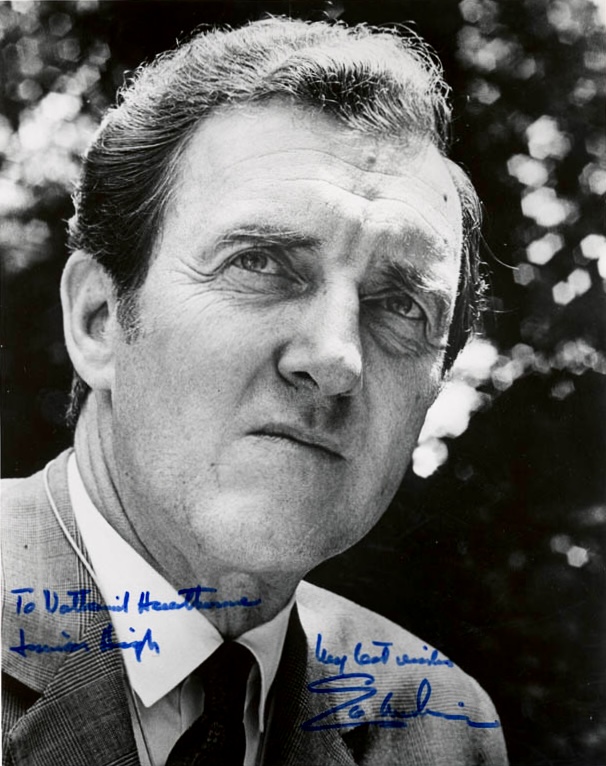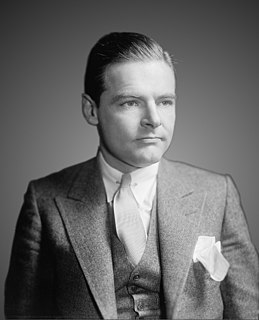 W
WNelson Aldrich Rockefeller was an American businessman and politician who served as the 41st vice president of the United States from 1974 to 1977, and previously as the 49th governor of New York from 1959 to 1973. He also served as assistant secretary of State for American Republic Affairs for Presidents Franklin D. Roosevelt and Harry S. Truman (1944–1945) as well as under secretary of Health, Education and Welfare under Dwight D. Eisenhower from 1953 to 1954. A grandson of billionaire John D. Rockefeller and a member of the wealthy Rockefeller family, he was a noted art collector and served as administrator of Rockefeller Center in Manhattan, New York City.
 W
WThis article lists those who were potential candidates for the Democratic nomination for Vice President of the United States in the 1968 election. After winning the Democratic presidential nomination at the 1968 Democratic National Convention, incumbent Vice President Hubert Humphrey asked the convention to nominate Maine Senator Edmund Muskie as his running mate. The convention overwhelmingly voted to ratify the choice of Muskie, though Julian Bond picked up a scattering of votes. Muskie was surprised by the selection, as he was from a Northeastern state with few electoral votes. Humphrey almost chose Oklahoma Senator Fred R. Harris, but Humphrey decided that Muskie's age, governmental experience, and quiet temperament made him the better candidate. The Humphrey-Muskie ticket ultimately lost to the Nixon-Agnew ticket in the 1968 election. Muskie's place on the national ticket helped make him an early front-runner for the 1972 Democratic presidential nomination, though Muskie ultimately dropped out of the contest.
 W
WElectoral history of Nelson Rockefeller, 41st Vice President of the United States (1974–1977), 49th Governor of New York (1959–1973) and three-time candidate for the Republican Party presidential nomination.
 W
WEstate of Rockefeller v. Commissioner, 762 F.2d 264, was a case in which the United States Court of Appeals for the Second Circuit held that section 162(a) of the Internal Revenue Code only allows deductions against income for expenses that occur while carrying on a trade or business.
 W
WThe Governor Nelson A. Rockefeller Empire State Plaza is a complex of several state government buildings in downtown Albany, New York.
 W
WThis article lists those who were potential candidates for the Republican nomination for Vice President of the United States in the 1960 election. After winning the Republican presidential nomination at the 1960 Republican National Convention, Vice President Richard Nixon needed to choose a running mate. President Dwight D. Eisenhower strongly supported UN Ambassador Henry Cabot Lodge Jr.. Though Lodge lacked charisma as a campaigner, his foreign policy experience and stature as ambassador made him an appealing candidate. However, Lodge was unpopular with the Republican right, who did not want a Northeastern moderate on the ticket. Nixon also strongly considered conservative Minnesota Representative Walter Judd and moderate Kentucky Senator Thruston Morton. After a closed session with Republican Party leaders, Nixon announced his choice of Lodge. The Republican convention ratified Nixon's choice of Lodge. The Nixon-Lodge ticket lost the 1960 election to the Democratic ticket of John F. Kennedy and Lyndon B. Johnson.
 W
WThis article lists those who were potential candidates for the Republican nomination for Vice President of the United States in the 1968 election. After winning the Republican presidential nomination at the 1968 Republican National Convention, former Vice President Richard Nixon convened a series of meetings with close advisers and party leaders such as Strom Thurmond in order to choose his running mate. Nixon ultimately asked the convention to nominate Maryland Governor Spiro Agnew as his running mate. By a large margin, Agnew won the vice presidential nomination on the first ballot over Michigan Governor George W. Romney, who was supported by a faction of liberal Republicans. Nixon chose Agnew because he wanted a centrist who was broadly acceptable to the party, had experience with domestic issues, and appealed to Southern voters. The Nixon-Agnew ticket defeated the Humphrey-Muskie ticket, and also won re-election in 1972, defeating the McGovern-Shriver ticket. However, Agnew was forced to resign as Vice President in 1973 due to a controversy regarding his personal taxes.
 W
WThe Rockefeller Republicans, also called Moderate or Liberal Republicans, were members of the Republican Party (GOP) in the 1930s–1970s who held moderate to liberal views on domestic issues, similar to those of Nelson Rockefeller, Governor of New York (1959–1973) and Vice President of the United States (1974–1977). Rockefeller Republicans were most common in the Northeast and the West Coast with their larger liberal constituencies while they were rare in the South and Midwest. However Geoffrey Kabaservice states that they were part of a separate political ideology, aligning on certain issues and policies with liberals, while on others with conservatives and on many with neither. They often saw themselves as champions of "good government", contrasting themselves to the often corrupt machine politics of the Democratic Party, particularly in large cities.
 W
WThe United States President's Commission on CIA Activities within the United States was set up under President Gerald Ford in 1975 to investigate the activities of the Central Intelligence Agency and other intelligence agencies within the United States. The commission was led by the Vice President, Nelson Rockefeller, and is sometimes referred to as the Rockefeller Commission.
 W
WOn August 9, 1974, Republican President Richard Nixon was forced to resign following the Watergate Scandal. Vice President Gerald Ford ascended to the presidency, leaving the office of vice president vacant. Under the terms of the 25th Amendment, a vice presidential vacancy is filled when the president nominates a candidate who is confirmed by both houses of Congress, which were controlled by the Democrats.